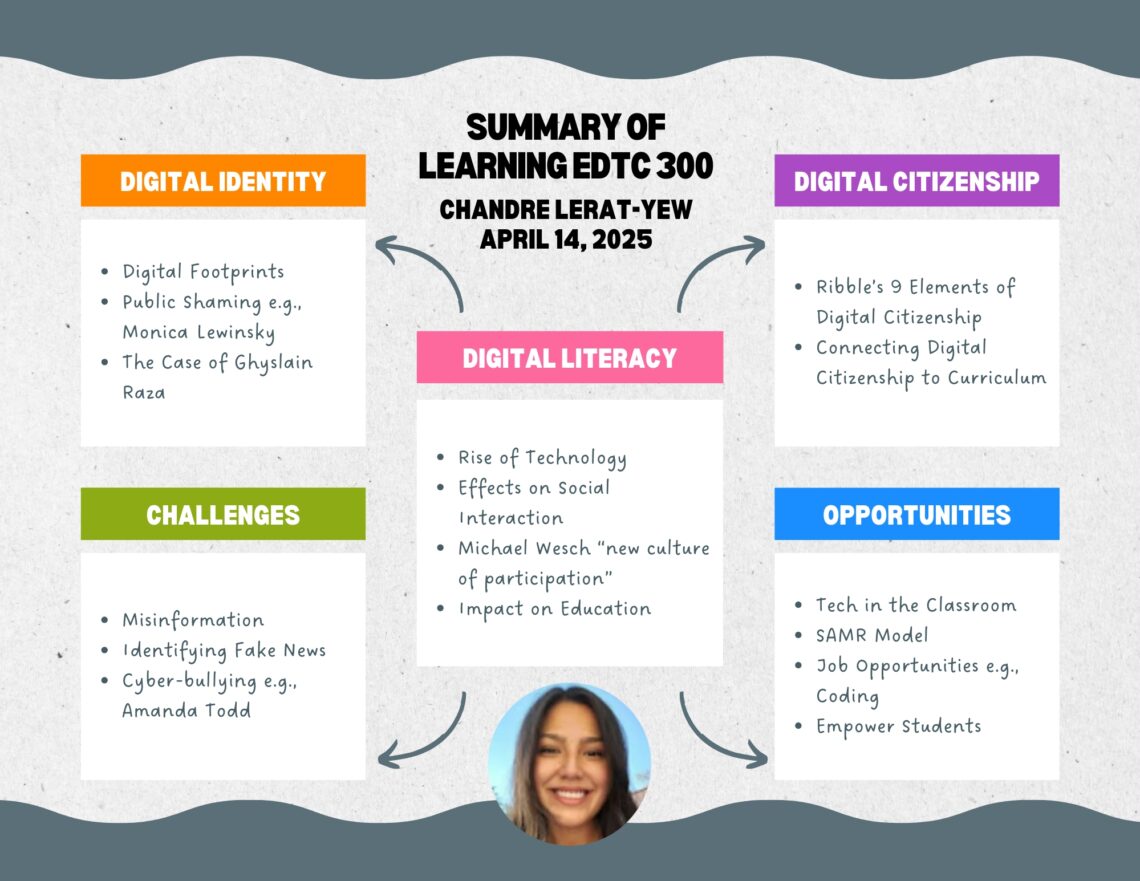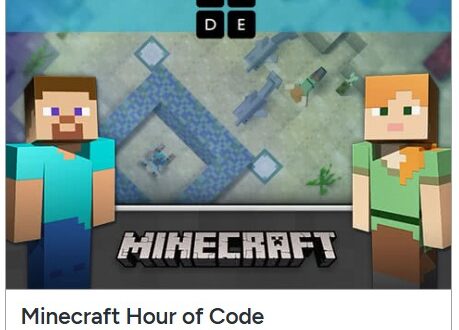This semester has completely reshaped the way I view technology’s role in education. Coming into this course, I had a basic understanding of digital tools, but I hadn’t fully grasped how deeply technology impacts every aspect of our students’ lives. Technology shapes everything from how we connect and communicate, to how we learn and view the world. Throughout the semester, I explored key concepts like digital literacy, citizenship, identity, and the evolving culture of participation online. These topics opened my eyes to the responsibilities educators have in helping students become critical thinkers, responsible digital citizens, and ethical users of technology.
Video and Transcript of Summary of Learning
Transcript:
The first thing I learned this semester is how technology has dramatically changed how we interact. Instead of passively consuming media, we are now actively participating by creating, connecting, and sharing content online. This shift is described by Michael Wesch as the “new culture of participation.” Since technology plays such a central role in students’ lives, I now know that education must evolve to teach students about digital literacy, or understanding how to navigate and critically engage with digital content.
This naturally connects to another important area I learned about: which is the issue of misinformation and fake news. In today’s digital world, information is abundant, but not all of it is reliable, as we know. It’s becoming increasingly difficult to distinguish between fact and fiction. As educators, we need to help students understand that fake news is often designed to go viral and can mislead people, sway opinions, and damage reputations. Closely related is the issue of cyberbullying which is still a serious concern, as highlighted by heartbreaking cases like Amanda Todd’s.
Cyberbullying ties into a broader topic I learned about: digital identity, digital footprints, and public shaming. For example, Monica Lewinsky, one of the first high-profile victims, shared how online humiliation had long-lasting effects on her mental health and reputation. Sadly, students today face similar risks. Harassment on social media or sharing images without consent can lead to serious real-life consequences. One powerful example is Ghyslain Raza, known online as the “Star Wars Kid.” After a video of him went viral, he faced relentless bullying, media intrusion, and even had to leave his school. His story shows why we must teach empathy, respect, and digital law in schools to protect and empower our students.
This is where digital citizenship comes in. I learned about Mike Ribble’s Nine Elements of Digital Citizenship, which include: Digital Etiquette, Digital Access, Digital Law, Digital Communication, Digital Literacy, Digital Commerce, Digital Rights & Responsibilities, Digital Safety & Security, and Digital Health & Wellness. These elements are essential and should be integrated across all grade levels. As I’ve learned, there are many ways to do this. For example, using real-life scenarios to explore cyberbullying, analyzing bias in news sources to build digital literacy, or creating positive digital footprints through ePortfolio projects.
In summary, this course has taught me the value of using technology intentionally in the classroom. The SAMR model is one example of how we can elevate learning experiences by moving beyond substitution and using technology for transformation. When we adapt how we teach with tech, we also help prepare students for the future, opening doors to job opportunities, like coding, which we explored in class.
Most importantly, I’ve come to understand that schools must adapt to a digital world not just by teaching about technology, but by helping students use it meaningfully and responsibly. Education should strike a balance; addressing the challenges of digital life while also embracing its potential to support student well-being and success. Finally, I’ve learned the importance of incorporating digital citizenship into the curriculum. When we do this, we empower students to be safe, thoughtful, and confident as they navigate the digital world.



